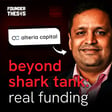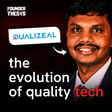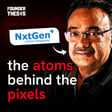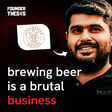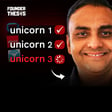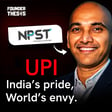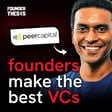
How Responsive Automates Enterprise Deal Making with AI | Ganesh Shankar
How does Ganesh Shankar turn mind-numbing RFP chaos into revenue—and build a new SaaS category while he’s at it? Inside Responsive (formerly RFPIO), we unpack AI-powered Strategic Response Management (SRM), Fortune-100 adoption, and the hidden moats of enterprise sales tech.
In this candid conversation with Akshay Datt, Ganesh traces his journey from product leader to CEO, the pain point that sparked RFPIO, and the evolution to Responsive as customers began using the platform far beyond RFPs—security/DDQs, emails, and more. He explains why their AI sits on curated enterprise content (not the open web), how governance turns “answers” into an organizational asset, and what makes SRM sticky at scale. We also get into traction: 25 of the Fortune 100 and 2,000+ customers, plus a staggering $400B+ in proposal value processed on the platform—signals of a durable category play in a funding-tight market. If you’re a founder, operator, or investor hunting real moats in B2B SaaS, this one’s your field guide.
— How Responsive built SRM beyond RFPs (security, DDQs, email) and why that matters for win-rates.
— AI on enterprise-governed content: the real moat in sales tech (compliance, accuracy, tone).
— Fortune-100 adoption, 2,000+ customers, $400B+ proposals processed—traction without hype.
— Sticky workflows and deep integrations (CRM, email, Slack/Teams, Drive/SharePoint).
— Founder playbook: category naming (RFPIO → Responsive), SRM maturity findings, and scaling in a funding winter.
Subscribe to Founder Thesis
Follow Akshay Datt on LinkedIn for exclusive clips
More founder stories at founderthesis.com.
00:00 — Founder story & the RFP pain
04:30 — RFPIO V1: killing copy-paste
13:00 — SRM: beyond RFPs to DDQs/email
24:30 — AI on enterprise content (not web)
36:30 — Moats: governance, accuracy, compliance
47:00 — Fortune-100 wins & 2,000+ customers
53:00 — Integrations: CRM, email, Slack/Teams
1:14:50 — Rebrand to Responsive & SRM play
1:22:40 — SRM maturity: win-rate lift
1:24:00 — $400B+ proposals & what’s next
#GaneshShankar, #Responsive, #RFPIO, #RFPSoftware, #StrategicResponseManagement, #SRM, #SaaS, #SalesTech, #AIinSaaS, #EnterpriseSoftware, #B2BSaaS, #ComplianceAutomation, #ProposalManagement, #FundingWinter, #StartupMoats, #IPO, #Unicorn, #VC, #SalesEnablement, #GlobalExpansion












